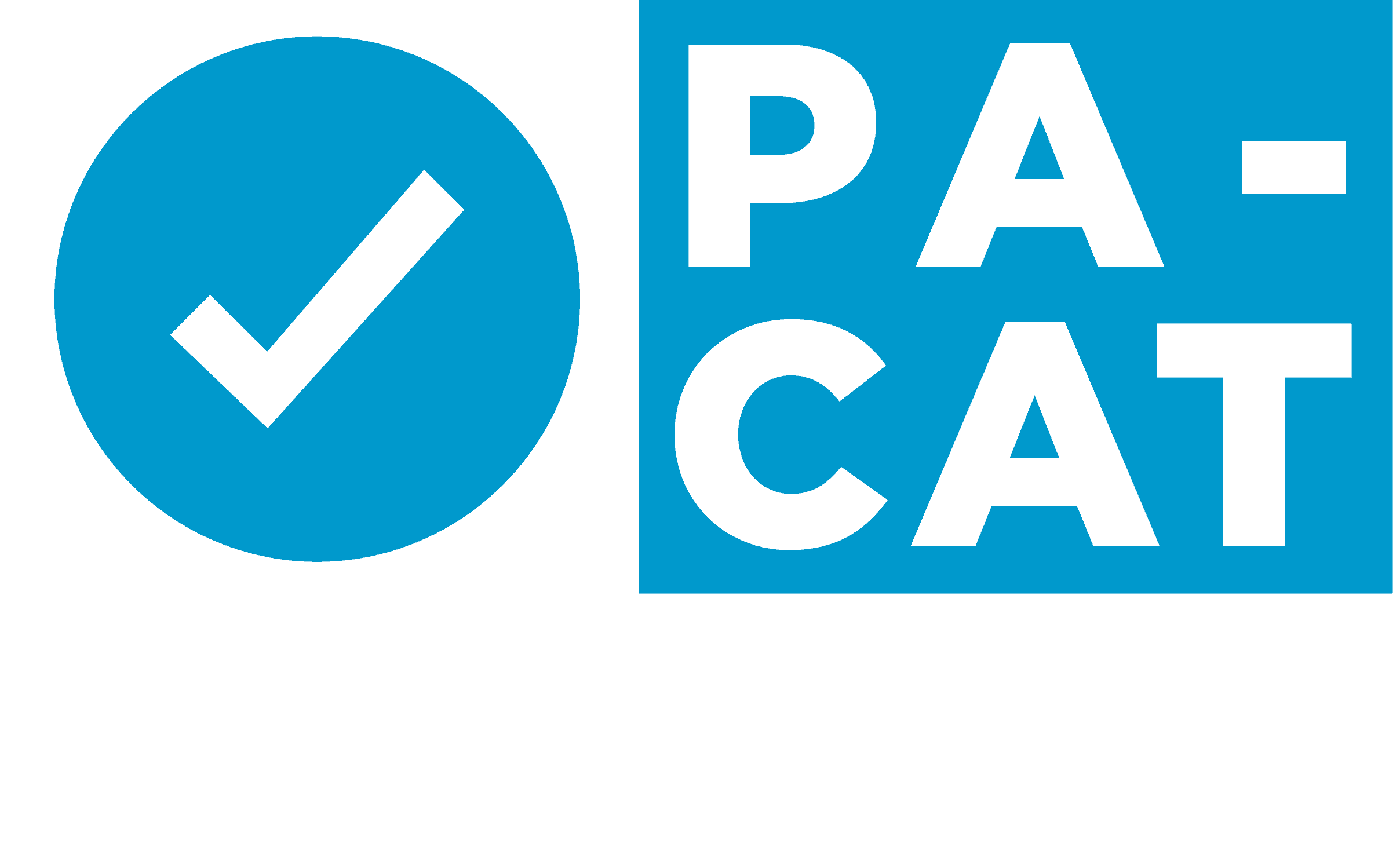
Where Does Your Program Stand? State of the PA Industry
ISSUE 6
Where Does Your Program Stand? State of the PA Industry
By Jim Pearson and Dr. Scott Massey
Welcome back to PA Admissions Corner. In the last issue, we finished a four-part series on controlling your admissions process, in which we set out several ways to streamline and maintain your PA admissions from the beginning of the cycle to the very end. As we move forward, let’s take a look at the overall industry, how it has changed in recent years, and some statistics about PA programs and PA student population that may surprise you.
So Many Opportunities!
Without the professional training provided by over 300 PA educational institutions across the nation, close to over 12,000 people per year would be unable to become physician assistants. The delivery of healthcare across the nation would suffer. Every year, well over 34,000 candidates apply to PA programs across the United States in hopes of being chosen for an interview, then selected as a student to be trained as a physician assistant.
We often say that with this excellent number of applicants compared to the overall seats available, no PA program should have unfilled seats. Yet it routinely happens that on the first day of classes, cohorts have empty seats where qualified students could be learning— and paying tuition—which should never be taken for granted when it comes to maintaining a great PA program. Why does this happen? How are PA programs nationwide failing to take advantage of this growing graduate healthcare market? These are the puzzles we’re here to solve.
Growing Graduate Health Care Market?
You bet it is, for now. According to the U.S. Bureau of Labor Statistics, employment of physician assistants is projected to grow 31% from 2019 to 2029. Compare that to the projected growth of all occupations in the U.S. economy combined (only 4%) and it’s easy to see that PA careers are skyrocketing.
“Well, obviously!” you might be thinking. “With the aging baby boomer population, the healthcare industry is without a doubt bigger than it ever has been.” That’ true , but consider this: PA careers’ projected growth of 31% outpaces the projected growth of healthcare diagnosing/treating practitioners (10%) three times over. It’s not simply the baby boomers who create the demand, either. Increasing rates of chronic obesity-related illnesses like diabetes are upping the need for preventative and maintenance healthcare.
The benefits of training and employing PAs are apparent in this climate.
- PAs can be trained more quickly and at less cost than physicians.
- PAs fit well into the team-based healthcare provision models.
- States are constantly expanding the autonomy of PAs and the procedures PAs are allowed to perform.
- With a median annual salary of $112,260, PAs have well-paid and rewarding careers.
A brief overview of current market analysis clearly shows that, like many graduate medical educational industries, the PA educational industry has experienced significant growth over the last 15 years. That growth rate will continue for years to come, presenting new opportunities.
Those opportunities will come with challenges though; the number of PA programs is increasing with this demand, so the number of your program’s competitors is also on the rise. More opening seats mean more competition for applicants to fill them. In some areas of the country, applications per school have started to drop.
More about Your Applicants
Here are some interesting statistics about PA program applicants. As you review these, take note of certain populations or groups that your program can reach out to. Look for areas in which new focus and opportunities can be created.
PA applicants have an average non-science GPA of 3.50 and an average science GPA of 3.30. Are you surprised that the average isn’t higher? Actually, high GPA often doesn’t mean what we assume. We’ll discuss this further in our upcoming issue on grade inflation.
Matriculant students have an average non-science GPA of 3.71 and an average science GPA of 3.45.
The top ten majors of PA program applicants:
- Biology
- Health Science
- Psychology
- Biological Sciences
- Exercise Science
- Kinesiology
- Biomedical Science
- General Studies
- Nutrition
- Other
Did you know?
- The median age of applicants is 25, and the average age of first-year students ranges from 25 to 28.
- In 1980, 36% of Certified PAs were women. Today, 71% are women.
- About 72% of PA students are single.
- Over 70% of PA students are White.
- 95% of applicants admitted to PA programs had previous experience in healthcare.
- The average number of PA programs an applicant will apply to is EIGHT!
The Most Influential Noncognitive Factors Affecting PA Admissions
- Faculty interactions. It’s not the first or last time you’ll hear us say this. High-touch communication is vital, and an engaged faculty is exciting to applicants and to matriculating students.
- Career motivation. Motivation is a more important factor in academic success than almost any other. Motivation comes from inside, but there are ways that your program can stoke those fires and keep them burning bright.
- Knowledge of the PA profession. Knowing what to expect ahead of time keeps students prepared for the rigors of a medical study program.
- Maturity and professionalism. These are traits that our recommended interviewing techniques (behavioral and group interviewing) can help your program gauge ahead of time (see Issue 4 of PA Admissions Corner for more information) so you don’t inadvertently get stuck with students who won’t be able to perform, or those who can’t handle the pressure and drop out.
Why So Many Unfilled Seats?
This is where we come in. In our years of studying PA programs across the country, we’ve learned where the biggest problems lurk when it comes to filling cohorts with qualified students. There are always exceptions to the rule, but the problems are usually neither with the quality of the applicants nor the quality of the PA programs, but in a fundamental breakdown of applicant processing and communication outside and inside the program.
These breakdowns happen in several places:
- Between the applicants and the program. This is seen in a lack of high-touch prompt communication with applicants, which is needed to build a relationship of trust and mutual interest. Is your program quickly reaching out to its best applicants?
- Between your program’s admissions process and your program’s enrollment. Is your program suffering from a bogged-down, understaffed, disorganized admissions process? Are you losing great applicants because other better-organized programs are getting to them first?
- Between your program’s admissions team and your program’s mission. Does your program lack an updated and understandable rubric for consistently scoring applicants to find the ones that most closely align with your program’s mission and values? Do you have a system in place to ensure that you’re capturing the applicants your program wants the most? Are you wasting time chasing applicants who have little desire or intention to attend your program?
If you have been following our first Issues of PA Admissions Corner, you’ll know that we jumped right into providing solutions for these communication breakdowns, and naturally, there is much more to come. We are pleased to share what we have learned with PA admissions directors and their admissions programs.
We, too, have a mission. Ours is to help you work with the prospects who work with you, those who have the highest probability of enrollment and matriculation in your PA program. And remember, we don’t want or expect every PA program to follow a cookie-cutter pattern. We want your program to play to its strengths in every step of the process. Our goal is no more empty seats!
NEXT TIME…
In the next Issue of PA Admissions Corner, we’ll begin our four-part series on Struggles in Admissions Practices, in which we cover specific issues that plague every program:
- Grade inflation in high schools/undergraduate programs
- Lack of didactic preparedness among applicants
- Competition from other programs
- How to assess your competitors and find your program’s strengths
To your admissions and program success,
Jim Pearson, CEO
Exam Master
Dr. Scott Massey Ph.D., PA-C
Scott Massey LLC
Exam Master partners with PA programs by:
- Supporting Admissions
- Strengthening Foundational Knowledge for Early Success
- Fostering a Culture of Self-Directed Learning
- Providing Targeted Remediation & PANCE Prep Resources
- Pre-Matriculation Program
- Medical Terminology
- Emory Body System Review Program
- PANCE Question Banks & Practice Exams
For information on any of the above products and/or services, contact us.

